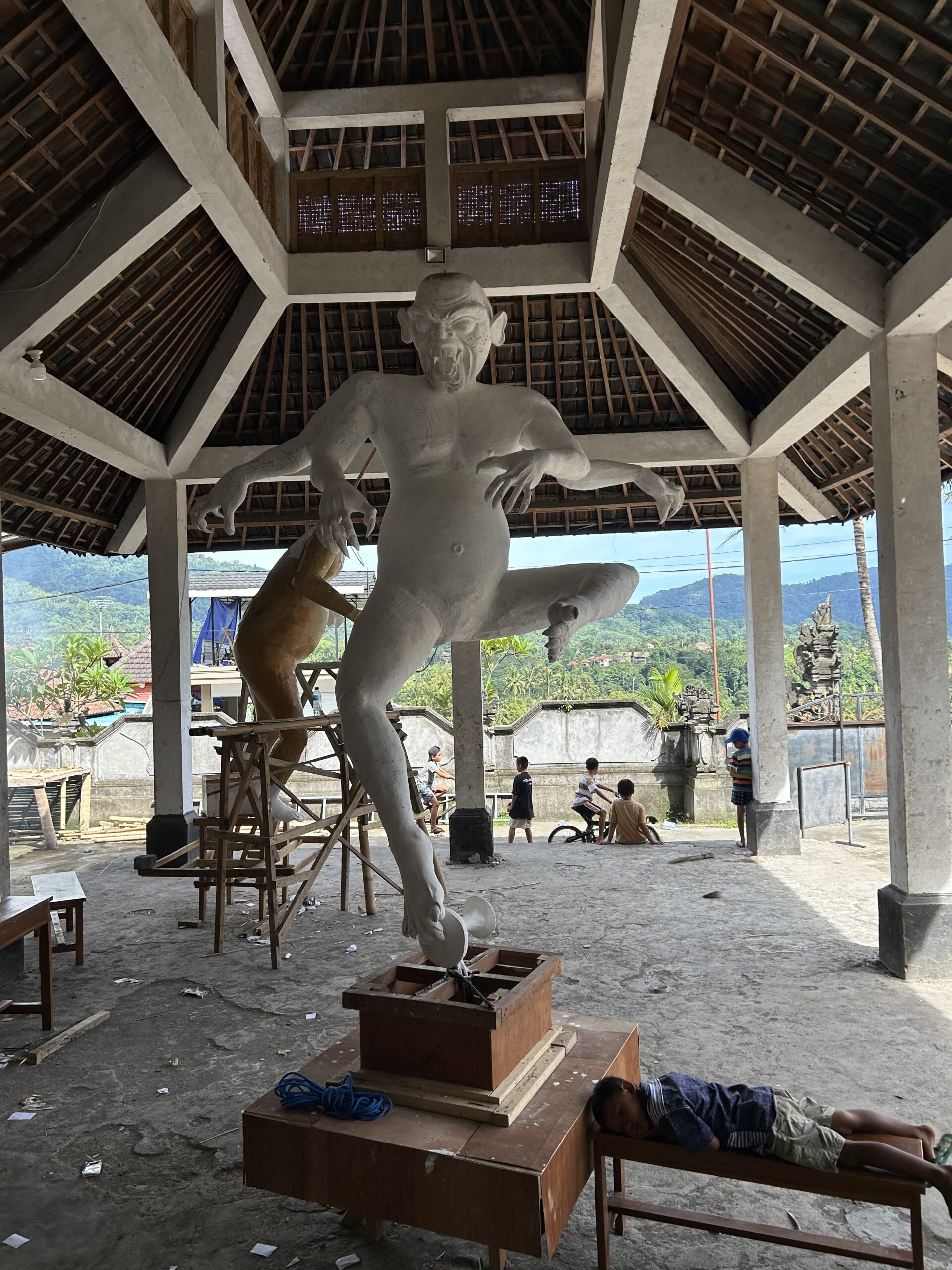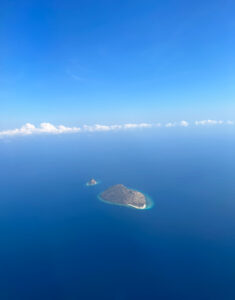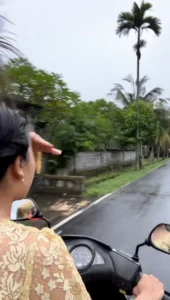Little did I know when planning my trip that it would coincide with some very special days in Balinese culture. Upon returning to the Island of Gods, I visited my friend Yuni, a wonderful woman I had met in a herbal making class last year. As we caught up on general life updates, I also learned that the upcoming March 10th, 11th and 12th would be significant days on the island.
Nyepi, or Catur Brata Penyepian, marks Balinese New Year according to the Caka calendar (there are two official calendars in Bali). Interestingly, the eve before Nyepi is celebrated with ogoh-ogoh parades in the villages, and as of 6 am the following morning the “Day of Silence” commences. There is so much to unpack here, so bear with me.
Firstly, “ogoh-ogoh” are statues, true pieces of art, prepared specifically for this event (a proud moment for young talented individuals like Yoga). These statues depict a form of demon, often inspired by haunting local folklore and are constructed using mostly natural materials such as palm fibres, bamboo and paper, with meticulous attention to detail. Though Yoga’s statue was not yet completed when he revealed it to me, it was already crafted to precision when it came to muscles lines, wrinkles and even toenails. Extravagant decorations would be added at the end to finalise the masterpiece.
The name ‘ogoh-ogoh’ is derived from another funky Balinese word ‘ogah-ogah’, which essentially means ‘to shake’. During the parade, the statues are rotated three times counterclockwise and shaken to the rhythm of gamelan music to ward off the evil spirits, thus purifying the streets of negative forces. Apparently, the tradition stems from Ngerupuk, a folk-based ritual, sometimes even alluded to a kind of exorcism.
Following the festivities of the night is the “Day of Silence, which begins at 6 am in morning and lasts until 6 am of the next day. It’s a day of restraint, self-reflection and meditation — sort of an obligatory mental detox, if you will. I was told that rules are strict, and visitors of the island must abide by them as well, meaning that everyone without exception must stay indoors, switch off the lights and electronics, and remain silent. I am praying that AC is excused from these rules. Everything is to remain shut during that time: schools, business — including shops, restaurants and grocery stores, roads, and even the airport!!! Only hospitals and emergency services will be operational, as well as pecalangs (local guards or ‘Nyepi police’) patrolling empty streets to ensure that no one leaves their household. Isn’t that fascinating?
I’m particularly excited about what I learned from a Jamaican Bali resident of three years: the stars shine so brightly during the night that you feel as if you are in space. Talk about light pollution! As cherry on top, the following day is said to offer extraordinary visibility with Bali’s most prominent volcanoes and nearby islands such as Lombok appearing within arm’s reach.
The day after Nyepi is known as Ngembak Geni, when life returns to normal and people eagerly reconnect after the 24-hour shutdown. It is customary to ask each other for forgiveness and this way let go of the past. Why isn’t this a worldwide practice? Just imagine!
Bring it on, 1946!




